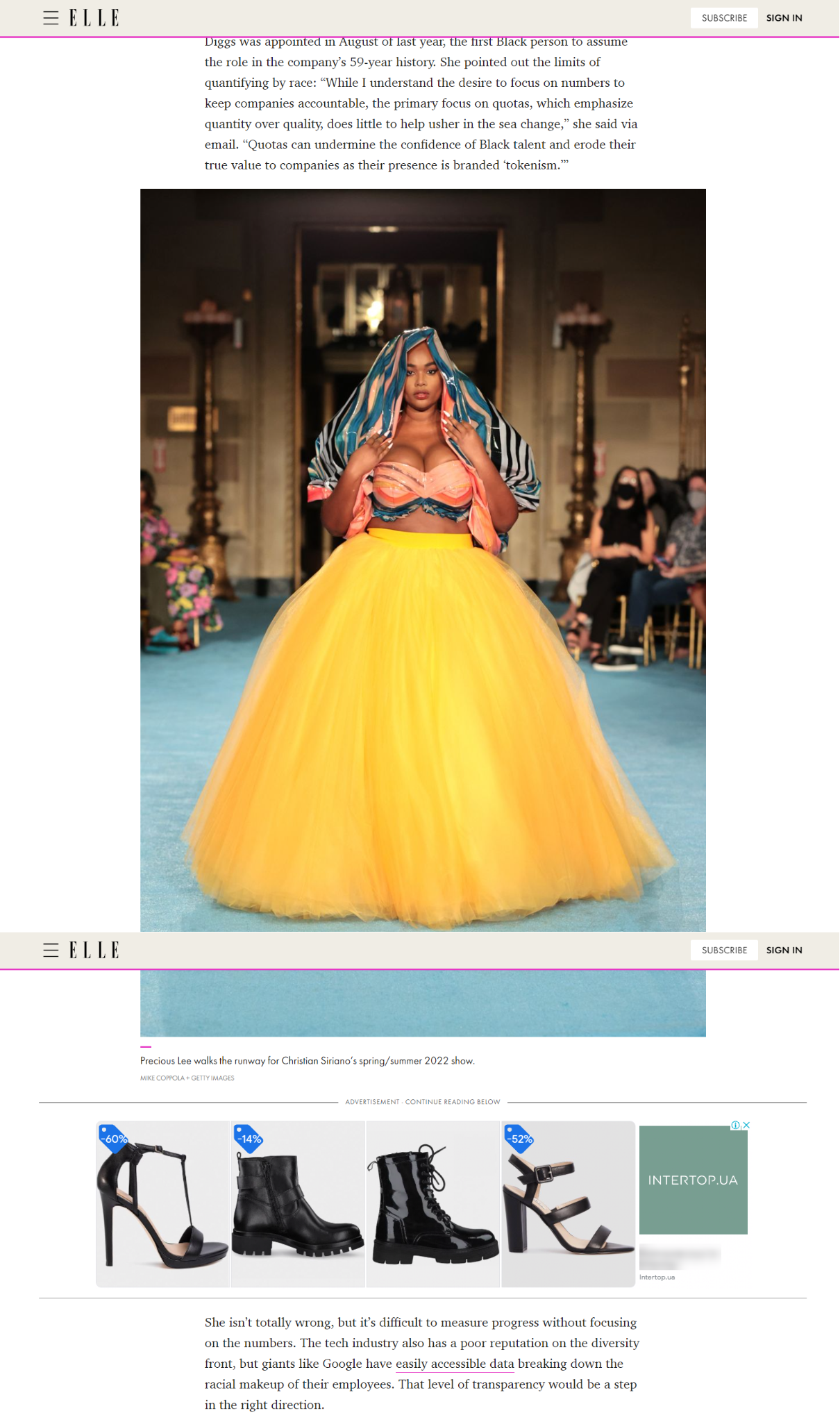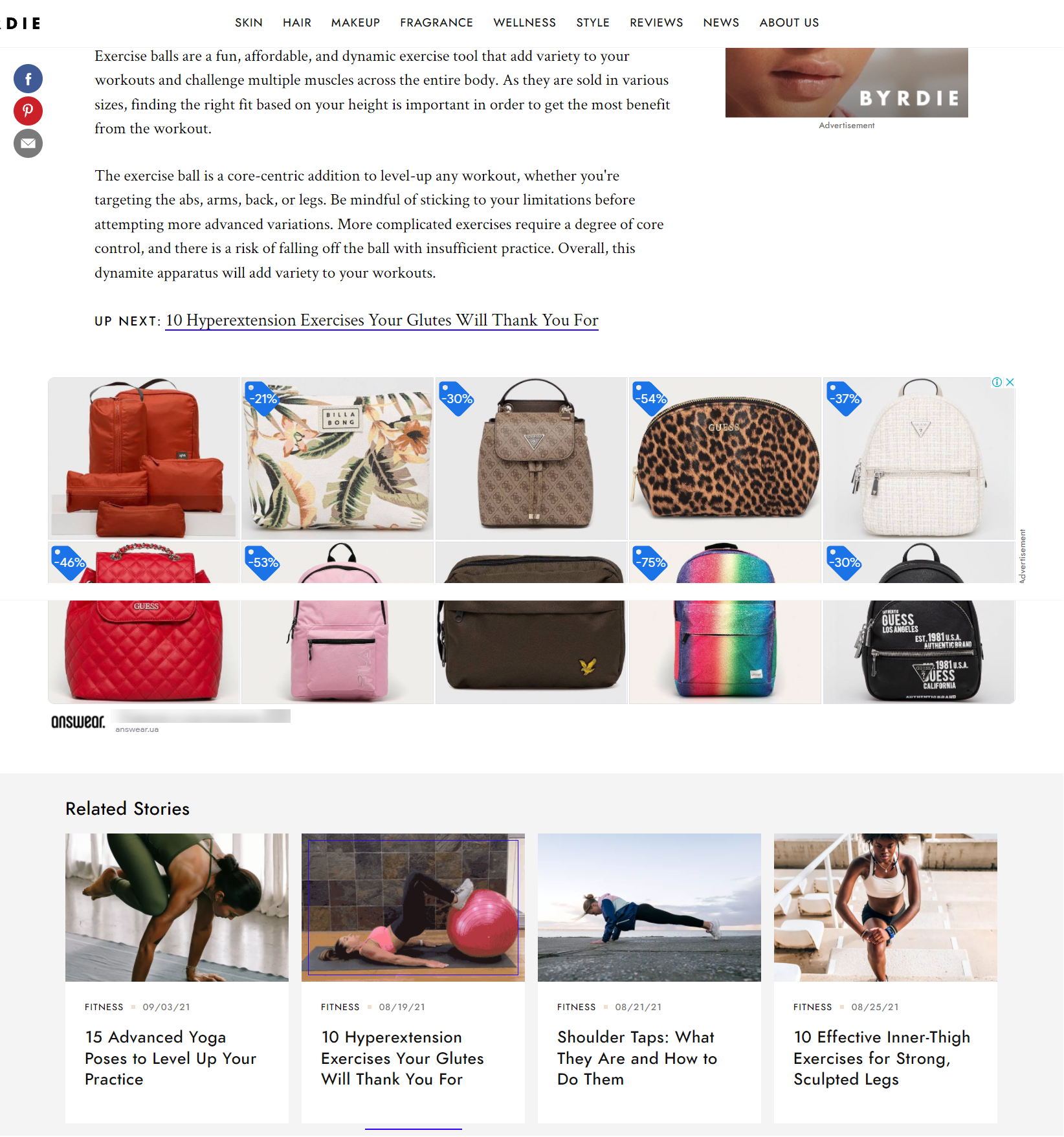Display advertising is the process of promoting a product using an online paid ad placed on relevant social media accounts and third-party platforms. These ads include text, images, or videos and encourage site visitors to go to a landing page and take a certain desired action or buy a product.
In this article, we’ll explain how display ads work, cover their advantages and disadvantages, discuss their types, and provide some examples.
How does display advertising work?
Display advertising is a great marketing technique since it benefits both website owners and advertisers. Host websites can monetize their traffic by selling some space using Google AdSense while advertisers buy it with Google Ads.
Ads are served by the Google Display Network. It allows advertisers to find the right target audience and show their promotions in the right place at the right time. With this network, you can find new prospects based on similar audiences and reveal the most promising audiences to blow up your conversions with automated targeting. It works based on a landing page and your existing audiences. Alternatively, you can start with remarketing. Tracking users’ cookies when they leave items in their shopping cart without buying enables marketers to sell more.
Google uses two pricing models: CPC (cost per click) and CPM (cost per thousand views). It means that every time a user clicks through your ad, you’re charged a specific amount of money based on your bidding strategy.
Advertisers monitor cookies and collect data from several external websites to keep track of users’ activities. This data aggregation enables them to do behavioral targeting. Google also makes it possible to create contextually targeted and geographical ads. Contextual ads are only placed on sites relevant to your commercial message. For example, if you sell sports shoes, your ads can be promoted on sports store sites and sport-themed blogs. Demographic and geographical targeting allows you to reach specific audience segments that might be interested in your products, and that is an excellent choice if you provide seasonal offers.
Now that you know more about the display advertising algorithm, it’s time to review its advantages and disadvantages for your business.
Advantages and Disadvantages of Display Advertising
Before creating your first display ad campaign, you should be aware of its pros and cons. Besides, you will need to figure out if this type of ad is the best choice to reach your marketing goal, so let’s uncover the opportunities it provides.
The biggest perk of display advertising is its wide outreach that allows businesses to find prospects worldwide. Take a closer look at other benefits of this type of ad.
- Helps build brand awareness. Unlike search advertising, display ads don’t reach audiences with purchase intent. However, they allow businesses to make people remember their brands even if these users have never needed their products before. This way, they manage to evoke initial interest and let people recall it once they have a need for it. As a result, this particular brand is associated with a certain product they promote using display advertising.
- Provides targeting opportunities. With display ads, you can narrow down your audience to the most high-performing prospects. This is possible due to various targeting opportunities available. You can reach people based on their demographics, geographical position, language, general interests, behavior, and previous interactions. The last one means you can win back leads who liked your products and added them to their carts but didn’t make purchases eventually.
- Enables to track results. After launching your display ad campaign, you can monitor your number of clicks, determine when a prospect converted into a client, identify on which platform conversion took place, and reveal the most effective advertisements. This is a great chance to improve your future campaigns and invest in more successful strategies.
Now that you are more interested in creating your first display ad, you should also be aware of its shortcomings.
- Low conversion rates. Compared to search advertising, display ads show lower conversion rates. This should not come as a surprise — search ads are designed for leads with purchase intent, while display ads allow businesses to create more interest in a product. So, if you aim at increasing your sales, display ads may not be the best choice.
- Lack of reputation management. Since you don’t have that much influence on the choice of platforms for your ads, they can sometimes be unrelated to your business, which also means you’ll be charged either way. Besides, such irrelevant ads may irritate site visitors. If your brand is famous and authoritative, displaying ads on immaterial sites may damage your reputation.
- Banner blindness. It has become a common phenomenon for many internet users in the last few years. Banner blindness helps us deal with information overload and ad fatigue. People subconsciously ignore advertisements, especially when they are designed as separate blocks that strike the eye. To make your display ads stand out, make use of rich media that attract users’ attention better.
- Ad blockers. More and more people are using ad blocking technologies every day due to ad fatigue. However, some brands try to cushion this negative impact by asking their site visitors to allow ads or buy subscriptions.
Now you can weigh all the perks and drawbacks to decide which type of ad to choose. Since we’ve mentioned search advertising, let’s take a closer look at it in comparison with display advertising.
Display Advertising vs. Search Advertising
Search advertising and display advertising are similar, yet they have their fair share of differences — the key one is user intent. Let’s talk about these two terms in more detail.
Search advertising appears on the search engine results page (SERP) after a user types in a corresponding keyword. This ad reaches users with clear purchase intent since they look for the same product a brand advertises.
Display advertising involves placing ads on sites relevant to your product and target audience. This kind of ad is based on a push approach, while search ads revolve around a pull approach. With search ads, only users looking for a particular product come across these promotions, while display ads are shown based on different targeting criteria.
When choosing the best ad to reach your goal, stay mindful of your need to increase brand awareness, search volume, budget, and business type. Firstly, you need to know if your audience is familiar with your brand and product. For this purpose, you can check your search volume for the necessary keyword with tools like Ahrefs. If the volume is low, you can choose display advertising, and if the audience is familiar with your brand, invest in search ads.
Secondly, decide whether you need to improve your brand awareness. If you’re an established brand and your outreach is wide, make use of search ads to sell to customers who already know you and your product.
Thirdly, think of your budget. Building brand awareness with the help of display advertising is an expensive and long-term strategy that will bring you fewer conversions than search ads can. If your business is on a tight budget, it might be a better idea to invest in search ads because they will bring you more profit.
One more crucial factor here is your type of business. Say, if you provide local products and services, choose search ads. If a person has an acute toothache, lost their apartment keys, or their pet got sick, they will look for immediate and specific solutions on Google and choose a company ranking high on SERP.
Now that you have a clear picture of the opportunities display advertising provides, let’s discover its types so that you can choose the one that fits your business.
Types of Display Advertising
There are different types, forms, and formats of display ads. To choose the most effective one for your business, check them out below.
Based on the type of targeting, there are the following kinds of display ads:
- demographic (based on users’ general interests, marketers create personalized ads for specific websites);
- geographic (based on users’ location);
- contextual (based on a website’s theme, keywords, and ad topic)
- retargeting (based on users’ previous actions, for example, they viewed your product but didn’t buy).
Based on the ad format, there are the following types of display ads:
- static (a traditional ad that includes text or images that don’t move);
- animated (a GIF);
- interactive (implies engaging a user to take action, for example, play a game);
- floating (a kind of a pop ad that doesn’t disappear while scrolling);
- expanding (an ad that becomes bigger in size after a user clicks on it);
- video.
Now that you know the types of display ads, it’s time to see some examples to gain inspiration for your campaign.
Examples of Display Ads
Interactive and video display ads are becoming more and more popular since they help attract user attention and can be more engaging than traditional ads. Let’s check out several examples of display ads.
Tokionomo promotes its product on New York Times’ site using an interactive ad to draw users’ attention. The brand offers a shelf-advertising robot that provides businesses with a new type of brand communication.
Elle provides its ad space for Intertop. This is an example of contextual display ads since promoting shoes on a fashion blog seems relevant.

Below is an example of a retargeting ad campaign on a beauty blog. Site visitors are shown the items they have previously looked through.

Congrats, now you know the pros and cons of display ads, their types, and the way they differ from search ads and have some examples at hand. So, choose the best type for your business, and increase your brand awareness and sales.
Last Updated: 22.03.2023

or